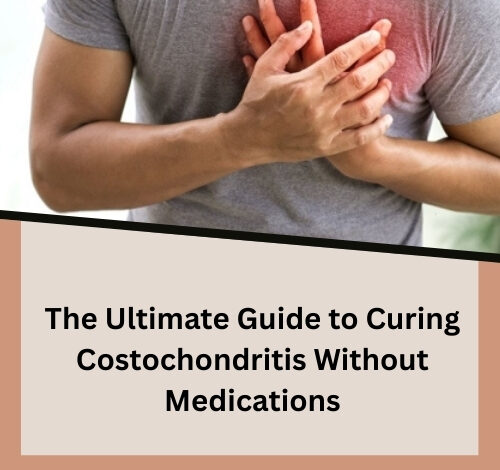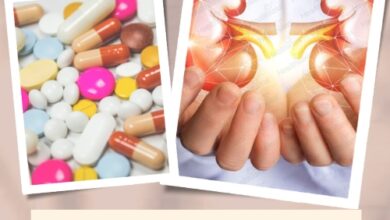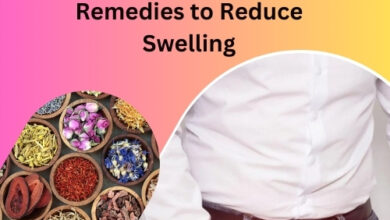The Ultimate Guide to Curing Costochondritis Without Medications

If you’ve been struggling with costochondritis, you know how disruptive and uncomfortable it can be. The sharp, sometimes stabbing chest pain can mimic heart issues and leave you feeling anxious and frustrated. While conventional treatments often involve anti-inflammatory medications or painkillers, many people seek natural, long-lasting relief without relying on pharmaceuticals.
This ultimate guide explores how to cure costochondritis naturally—without medications—through lifestyle changes, holistic therapies, and powerful natural remedies, including the use of Herbal Supplement for Costochondritis.
What is Costochondritis?
Costochondritis is a condition that causes inflammation in the cartilage where the ribs connect to the breastbone (sternum). This area is known as the costosternal junction. When this cartilage becomes irritated or inflamed, it can lead to chest pain that may feel sharp, aching, or pressure-like. The pain is often located on the left side of the chest but can affect either side and sometimes spreads to the back or abdomen.
Common Symptoms of Costochondritis:
- sharp or stabbing chest pain, often near the breastbone
- pain that worsens with deep breathing, coughing, or physical activity
- tenderness when pressing on the affected area
- discomfort that can come and go or persist over time
The pain can be alarming because it may mimic symptoms of a heart attack. However, unlike heart-related pain, Herbal Treatment For Costochondritis usually becomes more noticeable with movement or pressure and doesn’t typically radiate to other parts of the body like the jaw or arm.
What Causes Costochondritis?
While the exact cause is often unknown, several factors may trigger or contribute to the inflammation:
- Repetitive physical activity or strain on the chest
- Direct injury or trauma to the chest wall
- Poor posture over long periods (e.g., slouching at a desk)
- Respiratory infections or excessive coughing
- Arthritis or autoimmune conditions
Ditch the Medications: Natural Approaches That Work
You don’t have to rely on NSAIDs or prescription painkillers to manage your symptoms. In fact, many people find lasting relief through all-natural, holistic approaches. Here’s how you can heal costochondritis naturally:
1. Start with a Herbal Supplement for Costochondritis
One of the most effective ways to reduce inflammation and manage pain naturally is through the use of herbal supplements. The right combination of herbs can significantly support joint and cartilage health without the side effects of medications.
Top Herbal Supplements for Costochondritis:
- Turmeric (Curcumin) – A potent natural anti-inflammatory that helps reduce cartilage inflammation and joint pain.
- Boswellia Serrata – Known for treating arthritis, it’s great for easing chest wall pain and stiffness.
- Ginger Root – Enhances circulation and reduces inflammation naturally.
- Devil’s Claw – Effective for treating musculoskeletal discomfort and inflammation.
Make sure to choose high-quality supplements from trusted brands, and consult a healthcare provider or naturopath before beginning a new regimen.
2. Apply Heat and Cold Therapy
Alternating between heat and cold compresses can help relieve pain and reduce inflammation in the chest area:
- Cold Packs: Ideal for fresh flare-ups or swelling. Apply for 15–20 minutes several times a day.
- Heat Therapy: A warm compress or heating pad can soothe stiff muscles and improve blood flow during recovery.
3. Adopt an Anti-Inflammatory Diet
Your diet plays a major role in how quickly your body heals. By eating anti-inflammatory foods, you create an internal environment that supports recovery.
Include:
- Fatty fish (salmon, sardines, mackerel)
- Leafy greens (spinach, kale)
- Berries (blueberries, strawberries)
- Olive oil and avocados
- Nuts and seeds (walnuts, flaxseeds, chia seeds)
Avoid:
- Refined sugars and carbohydrates
- Processed foods
- Red meat and fried foods
- Excess alcohol and caffeine
4. Improve Posture and Body Alignment
Poor posture is a common contributor to costochondritis. Slouching or hunching forward can increase pressure on the rib cage and worsen symptoms. Correcting your posture can reduce flare-ups and help prevent re-injury.
Tips for Better Posture:
- Sit with your back straight and shoulders relaxed
- Use ergonomic chairs and desks
- Take regular breaks from sitting
- Perform posture-strengthening exercises (like planks and rows)
5. Gentle Stretching and Chest-Opening Exercises
Overexertion can aggravate the condition, but gentle, intentional movements can actually aid healing. Focus on exercises that stretch and open the chest, while strengthening the back.
Try:
- Yoga poses such as child’s pose, cobra, and cat-cow
- Chest-expanding stretches against a wall
- Light walking or swimming for circulatio
Be sure to listen to your body and avoid any movements that cause sharp pain.
6. Practice Deep Breathing and Relaxation Techniques
Shallow or rapid breathing—common when you’re in pain—can make costochondritis worse. Deep breathing exercises can help reduce tension in the chest and promote calmness.
Helpful Practices:
- diaphragmatic breathing
- box breathing (inhale-hold-exhale-hold)
- mindfulness meditation
- progressive muscle relaxation
These techniques also help reduce stress, which can be a silent contributor to inflammation.
7. Get Quality Rest and Sleep
Your body repairs itself during sleep. Prioritize restful sleep by sticking to a schedule, limiting screen time before bed, and creating a calming nighttime routine. Also, avoid sleeping on your stomach or sides if it increases chest pressure.
Final Thoughts
Curing costochondritis without medications is absolutely possible. With a combination of natural strategies—including proper rest, posture correction, diet, gentle movement, and the right herbal supplement for costochondritis—you can eliminate pain and support your body’s natural healing process.
Remember, every person heals at a different pace. Stay consistent, be patient, and always consult a healthcare professional when starting a new wellness routine.




